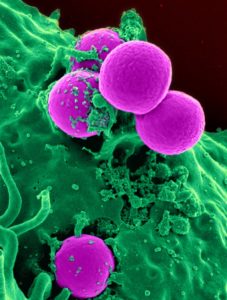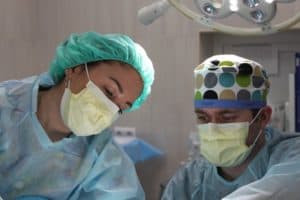If you’ve experienced a Rash After Csection, we’ll help to soothe your mind with these practical relief tips.
So you just gave birth through c-section and are now back home with the baby.
While the hard part may be over, you may start having a horrible skin rash that can cause you lots of discomfort and pain.
Although rash after Csection is relatively common, it can be irritating and uncomfortable.
Also known as postpartum hives, rash after Csection happens for several reasons, even for individuals who have never had allergies or skin conditions.
So, what causes a rash after csection, and how can you take care of it?
Here’s all you need to know.
What causes rash after csection
Cellulitis, contact dermatitis from surgical staples, or an allergic reaction from narcotics used for pain management causes rash after C-section.
In rare cases, this can also be pruritic urticarial papules and plaques of pregnancy rash (PUPPP rash), which appears on the stomach, is super itchy, and usually happens during pregnancy.
Cellulitis is a bacterial skin infection caused by streptococcus species.
It can affect skin trauma areas such as the incision site of your c-section.
In addition to a rash, some of the other symptoms that you may experience if you have cellulitis include pain, fever, chills, and the affected skin area will feel warm to the touch.
If it’s an allergic reaction to the narcotics, other symptoms that you can have are dizziness, shortness of breath, itchiness, and facial swelling.
How to get rid rash after surgery around the incision
If you develop a rash after Csection, the first thing you should see a doctor, especially if it comes with any other symptoms.
Your doctor can use a mix of observation and tests to determine the rash and how to treat it.
If it is cellulitis, a biopsy may be needed to diagnose the type of bacteria causing the infection.
A medical allergy will occur almost immediately after administering the medicine, but it can sometimes take weeks for the rash to appear.
In this case, your doctor will also need to know your medical history to know which medications cause an allergic reaction.
When it is contact dermatitis, the rash will disappear on its own once you take the staples out of your body.
However, if you feel itchy and there is no rash, this is caused by your skin is very dried out from your hormones.
It should get better as your hormones regulate after giving birth, but you can drink lots of water and apply lotion to the area to help with that.
Cellulitis needs to be treated immediately or become life-threatening if it reaches your bloodstream and internal organs.
It is treatable using antibiotics prescribed by your doctor.
Antihistamines can treat itchiness caused by an allergic reaction to the c-section medication.
However, make sure that these have been prescribed by your doctor and stay away from over-the-counter antihistamines that might not be safe when you’re breastfeeding.
A rash after a c-section is a pretty serious thing and can make your life an itchy hell if you don’t know how to take care of it.
If you follow these simple steps, your body will be back to normal in no time.
Frequently Asked Questions
Is It Normal To Have A Rash after C-section?
Rash after a c-section is a common symptom after the delivery of your newborn.
Rashes or hives don’t just happen to new parents but also ⅕ of people after any surgery.
However, rash after a c-section can occur even if you don’t have any allergies or have never had any hives before.
As long as you follow up with your doctor and take the appropriate steps to take care of a rash after a c-section, your body will be back to normal.
How Do You Know You Have An Internal Infection After C-section?
Internal infection after c-section, also known as Postpartum Endometritis, is a severe condition that requires prompt treatment.
Common signs of an inner infection after a c-section include intensified abdominal pain, fever, putrid-smelling vaginal discharge, pain when passing urine, and even increased vaginal bleeding.
Internal infection after c-section may occur six weeks after delivery, but it’s common between the second day and the first week after birth.
Seek immediate health care if you experience such symptoms. Postpartum Endometritis can cause severe health implications to the rest of your body if not treated promptly.
Does C-section Bulge Go Away?
Some belly fat sticking around after birth is common. However, women who give birth via the cesarean section may have the bulge more pronounced.
Everyone has different healing patterns. The c-section pooch may fade naturally for some women, and to others, it may stick around for years.
Diet, exercise, and a healthy lifestyle can hasten the fading of a c-section bulge.
In some instances, despite caring for your c-section belly, it may seem impossible to flatten the bulge.
Surgical intervention may be an effective remedy, but you should always consult with your health care provider before undertaking such procedures.
How Long Is Belly Tender After C-section?
You may experience tenderness and discomfort up to 6 weeks after a c-section.
Postpartum cramping is typical after childbirth and may last for several weeks.
However, if still after the sixth week the cramping doesn’t resolve, it is best to visit a health care provider.
For the first and second week, you might need some medicine for the pain. Follow up with your doctor before taking any new medication.
It takes up to 6 weeks for a full recovery. Avoid doing any strenuous activities during this period and importantly, take care of your incision.
How Do I Know My C-section Is Healing Properly?
Keeping an eye on your scar is a rudimentary way to know your c-section is healing correctly.
The incision should start to fade from red to pink while looking pretty uniform. Also, the scar should become less painful to touch.
If the incision doesn’t seep, ooze or drain, you are on the right track. Alternatively, you can heed to a specific timeline.
If by two weeks the scar looks and feels better, then you are healing correctly. It’s always vital to consult with your gynecologist in case of any doubts about the healing process.
What Do You Do If Your C-section Incision Is Opening?
It’s pretty alarming when your c-section incision is re-opening or exhibiting any signs that it is opening.
Seek immediate medical attention if you notice or feel that your incision is pulling apart.
Keep a close eye on the incision site for any signs of infection and if any areas are opening. Also, it’s vital to avoid any factors that may trigger your incision to re-open.
Related Post: Lifting Toddler After C Section

Iesha is a loving mother of 2 beautiful children. She’s an active parent who enjoys indoor and outdoor adventures with her family. Her mission is to share practical and realistic parenting advice to help the parenting community becoming stronger.


